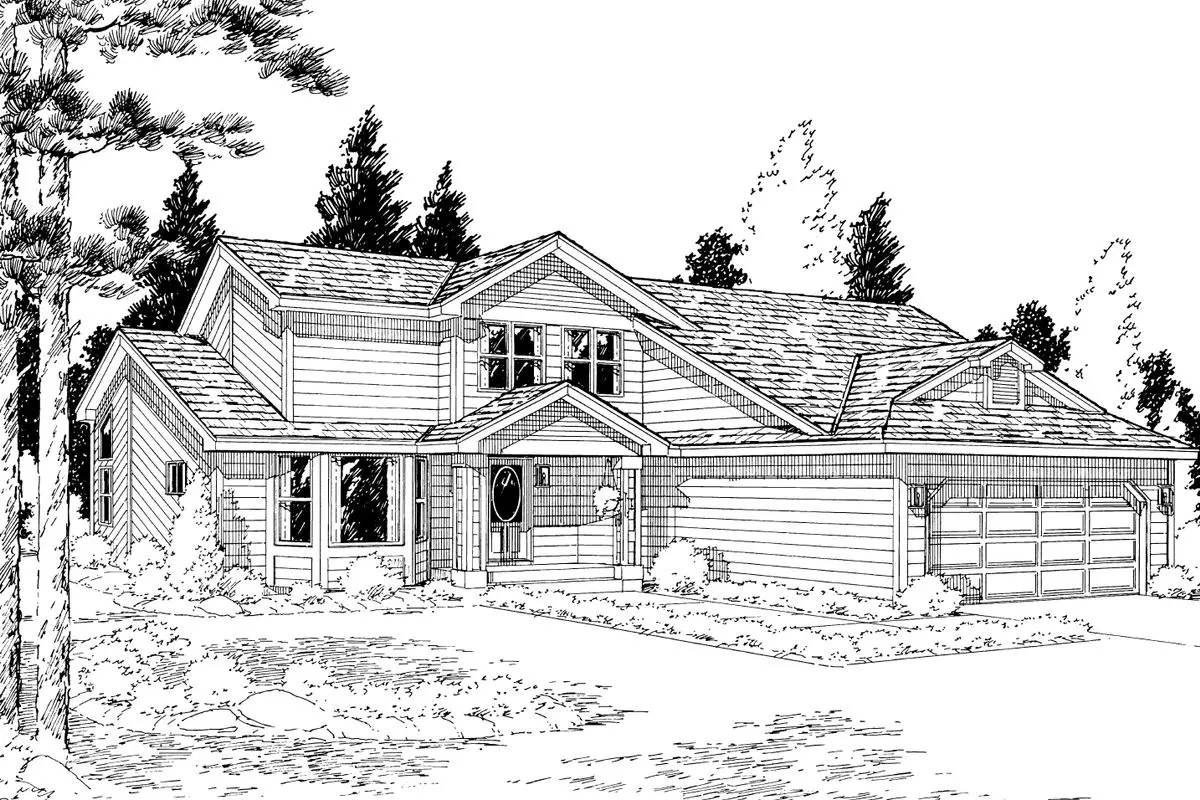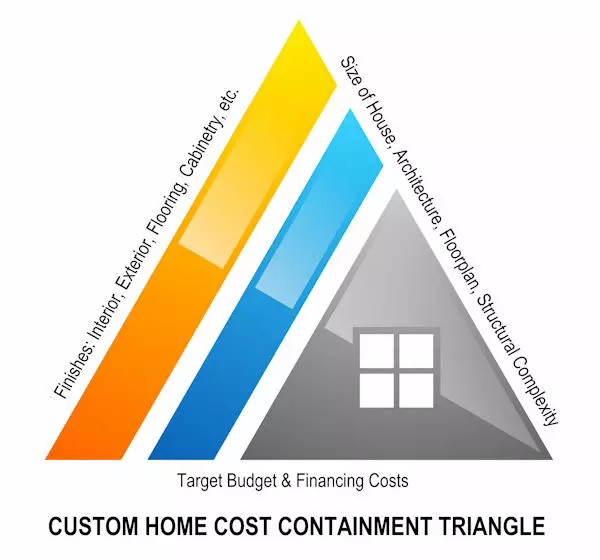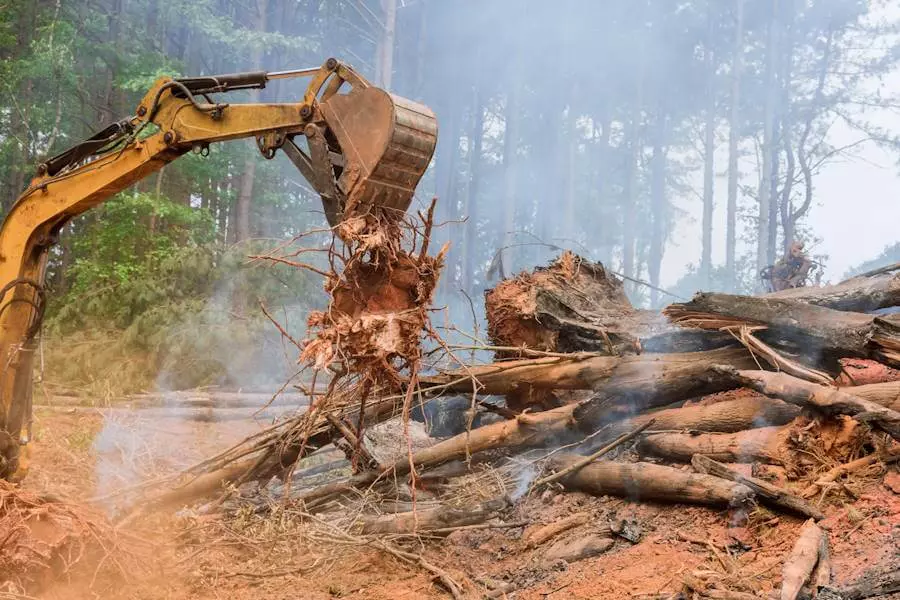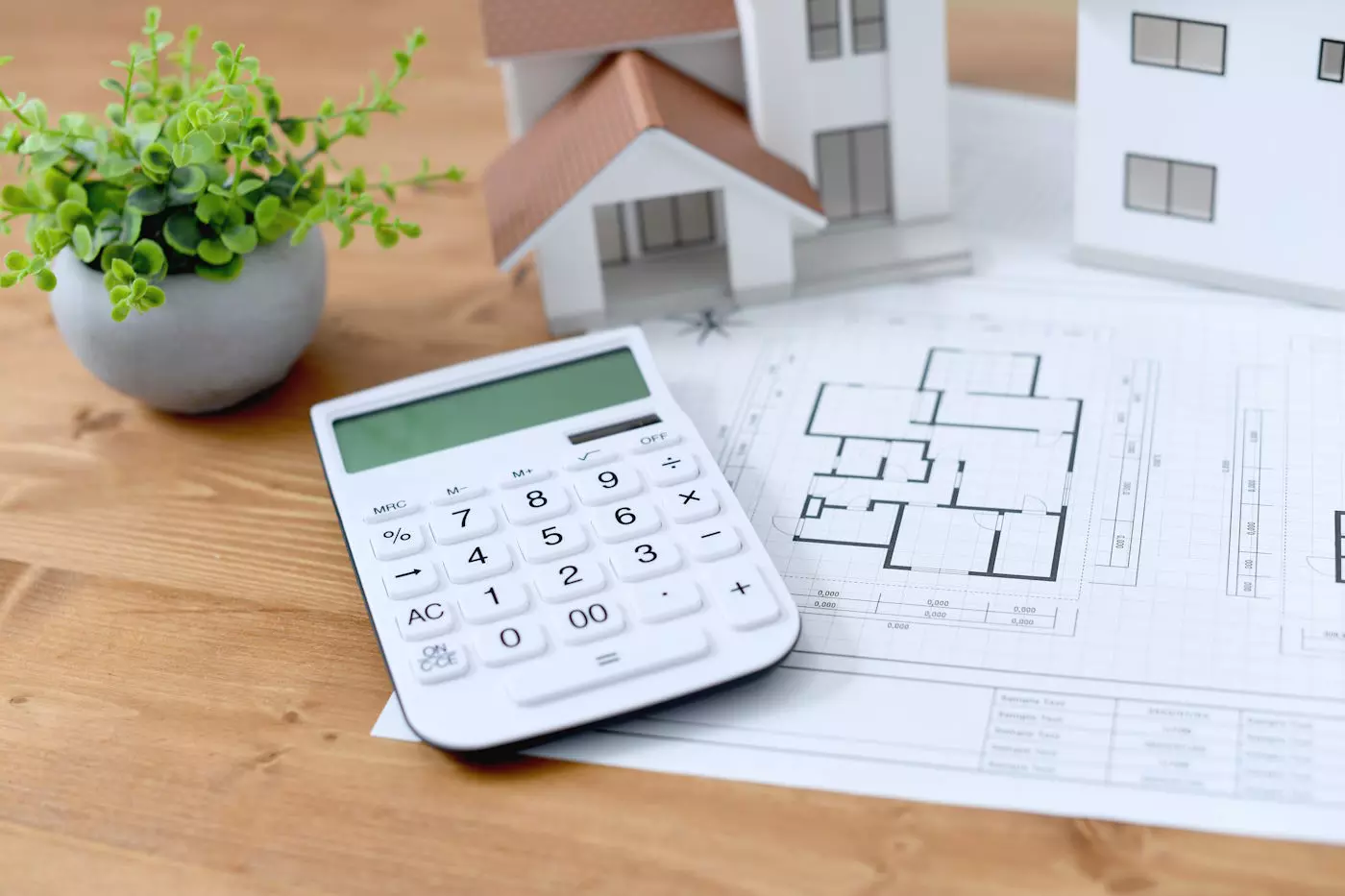What Does It Cost to Build a Custom Home in Woodland Park, CO? (Updated Jan 2024)
Wondering about the cost to build a custom home in Woodland Park, Co? In this article we dive into the costs and what drives them. In Woodland Park, like everywhere in the United States, the cost to build a custom home or buy an existing home is based on supply and demand. In today’s market, fears of rising costs and increased interest rates have affected the housing market and the number of houses available for sale. Today, though, it still remains somewhat of a seller’s market in Woodland Park. Resale inventory is lower than previous years and the homes on the market tend to be older and require substantial updating. But because there are fewer homes on the market, these older homes are selling at top dollar.
That being said, when it comes to investing your money, there is no greater investment than real estate for this exact reason. Housing prices may go down a little bit here and there, but over time housing prices always increase and your primary residence is the greatest source of wealth building in the United States.
So how do you get into the Home Ownership market when there are few homes available? The answer is . . . build a new custom home. Building a new custom home can get you into a home that you’ll love without having to compete with other buyers. Newer products, finishes, more efficient mechanical and plumbing systems and in general a better performing home.
 Building a Custom Home
Building a Custom Home
In this report, we’ll explain the process and materials that go into building a custom home. We’ll also talk about general costs and the multi stepped process for that new home design and construction. The information provided does not account for the cost of the lot or building in a rural area where there could be additional costs for a well, septic, a long driveway and other costs that relate to rural or country construction.
What is important to know about building a custom home is that you as the Buyer/Owner are paying for every detail that goes into the home. As such, you can also choose to make your home as simple or as extravagant as you like and the budget will allow.
Each home we build is unique, so no two homes cost the exact same amount. Custom homes start with a concept sketch of room relationships and build from there. While you might like one of our floor plans or bring a floor plan you find to us that is just the starting point. Nothing about a custom home is pre-determined. When you build a custom home, you will make decisions on everything from the number of rooms to built-in furnishings, cabinets, flooring, countertops, windows, exterior facade, and other details. Every decision affects the price.
When counseling our clients, we always tell them that the cost of building a home comes down to three things: your budget, your architectural choices and your finish choices.
 In the picture to the right are the three sides of the cost triangle. It starts with your budget which is shown along the bottom. The next piece are your architectural choices: size of house, design, floorplan, and structural complexity. On the opposite side are your interior and exterior finishes: stucco vs hardwood, hardwood flooring or tile vs vinyl plank, hickory cabinets vs oak, etc.
In the picture to the right are the three sides of the cost triangle. It starts with your budget which is shown along the bottom. The next piece are your architectural choices: size of house, design, floorplan, and structural complexity. On the opposite side are your interior and exterior finishes: stucco vs hardwood, hardwood flooring or tile vs vinyl plank, hickory cabinets vs oak, etc.
In the design process you will make a number of decisions based on your choices. When your finishes go above the allotted amount, something may have to give on the architectural choices and vice versa. Or, if you are unwilling to give up anything that you want, you may have to increase your budget. Ultimately, the decisions are yours.
The House Design & Blueprints
All custom homes start with a design. That design may start on a napkin, or it may be a floorplan you found online or somewhere else. Ultimately you will work with an architect to get the floorplan to match your dream. When you are totally comfortable with the design, your architect (or ours) will turn that design into blueprints. This design process should always include your builder because your builder can add important information during the design process that can save you money in the end. This design and blueprint process will cost between $2,500 and $5,000 when you use our architect. If you choose a floorplan for which we already have blueprints, then there is no cost for this step (unless you want to make changes.)
Land
One of the major costs that goes into the purchase of a custom home is the land or lot itself. Land prices vary, though you can plan to spend anywhere from $50,000 to over $150,000 for a city lot; country lots vary significantly based on proximity to major cities, commuting times & distances and other services. Lot sizes vary, though the median lot size in Woodland Park ranges from 9,000 sf to 15,000 sf and sometimes close to an acre. Larger lots in the County, typically on well and septic, range from half acre to over 35 acres.
Land value is based on location, lot size, proximity of utilities and amenities. Views and topography will have an impact on the lots price as well. In Teller County, a view of Pikes Peak is highly desirable and will cost more than a lot that doesn’t have a view.
In a developed sub-division, land is more expensive if it offers municipal services, good access and ideal topography for a garden-level or walk-out basement.
When trying to decide which lot to buy, take into consideration factors such as:
- Commute: How close is the property to your workplace or place of business?
- View: What will you see every morning when you look out the window?
- Amenities: What businesses and services are nearby or do you favor a lot that is far from urban areas?
- Topography and land features: Where will the home sit and how much usable yard space does that leave? How does the driveway layout and what are the soils conditions?
- Landscape features: Are there mature trees on the property and is this important to you? Do trees need to be cleared to build your house?
- Neighbors: Would you like the nearest neighbors to be close or far away?
- Raw versus developed land: Are there roads leading to the land, necessary utilities: water, gas, electric, telephone (Do not assume your cell phone will work.) And don’t forget internet service.
- Size of the house you intend to build: You’ll want to make sure the home will fit on the lot. If you are planning on building a 60’ long home and the lot is only 55’ wide that’s a problem.
- Solar Energy: If you are planning to install solar panels or you want passive solar, the lot needs to face the right direction. A good surveyor can help you determine this.
All in all, it might be better to purchase the land once you’ve chosen your builder so they can go with you to look at the land you want to buy and help you understand the results of all the tests that need to be done.
Purchasing the land can be a cash purchase or a lender can work with you to determine the best options for purchasing the land. But it really comes down to buying the land and then building on it or including the price of the land in the construction loan. There are reasons for selecting both options.
There are typically, two types of construction financing options available. The traditional two-step process or the streamlined one-step process. The differences are:
Two-Step Process: A construction loan lender works with you to purchase the lot and build the house. They will require some level of down payment or cash infusion to get the loan started. Just like the down payment on a conventional home purchase this could require 20% to 30% of the costs as a down payment. During that loan process you pay interest on the money that is advanced for the construction as it is drawn by the builder to pay the bills. This can be from cash on hand or included as a budget line item in the construction loan. When the house is completed, a traditional long-term lender pays off the construction financing and your traditional home mortgage begins at current interest rates over the time period you select; 30 years or 15 years is common.
One-Step Process: This loan process combines the construction financing and the ultimate permanent financing into one package. The total cost of the project is determined, and the various loan terms are developed so the day you close on your loan the interest rate is set. You make your down payment to the lender, and they use your money first when paying the construction bills. Monthly interest is paid on the drawn amount and this can be paid from cash on hand by the buyer or thru an interest reserve in the loan. When the house is finished the final amount due is paid and at that time additional funds can be paid to reduce the loan or the loan amount is defined and the monthly payments are determined at the interest rate when the loan was closed. This can work well if a cash infusion is anticipated or the sale of a house/property can generate cash to reduce or eliminate the actual loan in place.
Typically, construction loans roll over into a more traditional mortgage after the home is built. You may be required to make a larger than normal down payment and pay higher interest for the property using this special mortgage. Shop around to find the right lender at the best interest rate. We work with reputable lenders that offer both types of financing.
Building Base Costs
The expenses described herein are costs that you can plan to spend on any home construction. Though these costs may vary depending on the size and layout/plan of the house, we've provided an example of how much you might expect to spend on a 1600 sf to 2000 sf custom ranch style home with 3 bedrooms, 2-1/2 baths, a basement and a 3-car garage with some nice custom selections like solid surface countertops and non carpeted area flooring.
Plans and Permits
Once you have a design and a lot chosen, the builder will hire a surveyor or site planner to ensure the house will fit on the chosen lot. They will create a site plan showing the lot dimensions, house placement, setbacks from the lot lines and easements, utility location and the driveway width and length to name just a few items.
To apply for a permit, the builder will need to provide the site plan, the architectural plans, a plan for sediment/erosion control and structural drawings.
Based on the site plan the house is staked on the lot and grades are shot to confirm the elevation of the foundation and the ability of the site to carry the water away from the foundation. For our analysis of the two ranch style homes, the cost for plans, structural design, municipal fees and permits will range from $35,000 to $43,000
 Site Preparation, Excavation, Concrete Flatwork, Utility Stub in and Foundation
Site Preparation, Excavation, Concrete Flatwork, Utility Stub in and Foundation
The first step in constructing your home is excavating the property. First the excavator takes dirt out so the foundation can be poured, then he brings dirt and defined materials back to backfill around the foundation when it is complete.
The foundation includes the footings, the foundation itself, flatwork for the basement floor, garage floor, front porch, stairs and driveway. The foundation has insulation around or under the basement floor in the walk out areas and waterproofing added. Additionally, the basis for a radon system is installed. Utility services are stubbed into the foundation for future connections. The costs for all of this can range from $60,000 to $75,000.
Building Materials - Labor and Contractor Fees
Building materials are those items used to construct the home prior to the selected interior finishes being installed and finished. This includes framing lumber, exterior doors, windows, trusses, porches and decks, stairs, insulation systems, sheetrock, roofing, siding, stucco, stone for the facade and garage doors.
Labor is another area where costs have fluctuated. Be aware labor costs may vary depending on the builder and how much they charge. While it may be tempting to hire a builder with lower labor costs, be careful. A contractor who charges less for labor may be hiring lessor experienced workers. This includes labor for framing, painting, roofing installation, siding installation and more. The cost for all of this will range today from $212,000 to $240,000.
Insurance, Administration, Overhead and Contractor Fees
The general contractor charges a separate fee for the planning, on site coordination, and implementation of the home building process. Your general contractor will serve as your point of contact, your conductor, your guide through the construction of your custom home. Their fee includes the time and effort that it takes to direct teams of employees and subcontractors to ensure a beautiful, finished product, and the skill required to evaluate quality with each step of the process. Typical costs for the general contractor are around 8.5%-15% of the total cost to build. On our defined ranchers, this cost can very form $40,000 to $90,000.
Mechanicals
Mechanicals include heating, air conditioning, plumbing, electrical, fireplaces, electric fixtures, insulation and drywall. Expect to spend between $58,000 and $83,000 for these crucial parts. The systems installed will reflect the operational costs of the home once you occupy it. Spending now for more efficient systems will bring dividends in the future both economically and in a more comfortable house.
Exterior
The exterior of the home including grading, retaining walls and landscaping can run from $16,000 to $26,000 but can go up substantially depending on how much you’re willing to spend on landscaping. Want some trees? Need a retaining wall? Installing some flower beds? Hiring a professional landscaper? Your home builder will be able to walk you through these expenses to help you determine how they will affect the price. The other alternative is you may elect to landscape the yard yourself.
Amenities and Fixtures Can Skyrocket the Cost to Build a Custom Home
Amenities and fixtures, like flooring, cabinets and countertops, and appliances, are parts of the house where cost variations can be dramatic. Your personal preferences will affect how much you spend in this area. For example, in our sample homes, we priced it for carpet, and luxury vinyl plank flooring. Want a real hardwood floor? The cost will be significantly more as the price of wood is much greater than vinyl plank. In other words, expect to spend two or three times as much on flooring materials if you would like a higher-end product like hardwood.
A typical home buyer will spend approximately $85,000 to $105,000 on amenities and fixtures, but splurging on custom built cabinets, all hardwood floors and top of the line appliances can significantly increase these costs.
It is important to work with your builder when determining how much you want to spend on your home because this will determine the quality of amenities you can afford. These items are not fixed costs so if you exceed the pre-determined amounts for these items, the costs will be borne by you, the buyer. Remember the three sides of the pyramid help you balance the selections with regards to the targeted budget.
If you are building in a subdivision, most of the homes will be within a certain price point. If you exceed your allowances by a considerable amount that does not mean that your house will be worth more; it just means that your house will cost more based on your individual selections. Those extra costs may or may not result in a higher resale value of your property when it is time to sell.
Overall Cost to Build a Custom Home in Woodland Park, CO
So how much does it cost to build a custom home in Woodland Park, CO?
Now you understand that many variables go into determining the total price of constructing a new custom home. When the design/plan is completed, the structure is set, and the finishes now become a determining factor in completing the budget. Remember the cost triangle? You control two sides of that triangle, and the builder uses their efforts to adjust the third side to hopefully make the project work. Together, all three sides need to work together.
If you are looking for a lower price, you might consider an unfinished or partially finished basement or a smaller square footage (1,500 -1600 square feet or less).
With so many variables it’s hard to shop on your own. Meet with us to find the plan that meets your needs and feels like a good fit. We can customize that plan to your specific requirements. Work with us to select the materials and finishes going into the house while the design process is being performed. At the conclusion of the process you will have a defined house plan, defined materials, finishes and allowances for those selections and a defined budget. You can then go to your construction lender for the financing and know exactly what the costs for the new home will be.
Things to consider when trying to evaluate whether a contractor's costs are worth the price of a new home, these tips can help:
- Check references and maybe visit some of the houses the builder has constructed and confirm appropriate licenses with the local jurisdictions.
- Evaluate the contractor's warranty, construction process and standards of construction
- Research the builder's company history and look at their portfolio to examine the quality of their work. Check them out with entities like the Better Business Bureau.
What Is the Cost Per Square Foot?
One of the questions that home buyers always ask is, “but what's the cost per square foot?” Unfortunately, that question is nearly impossible to answer when discussing a custom home. It depends on the amenities that you include in the house and other factors, like the cost of the land. You won't know the cost per square foot until you get started with a reputable builder.
With a production home, the cost per square foot should be comparable to the cost of other homes in the area constructed by the same builder. To find out how much you can expect to spend per square foot on a production home, simply research newly built homes in the neighborhood that are currently for sale. It's important not to overbuild in a production neighborhood because you won’t necessarily get your money out when its time to sell. Consider how long you expect to live in the new home. If the time is longer the enjoyment you get from the selections you make may be a minor annual cost. The efficiencies of the systems in the house may pay for themselves over the time and you can enjoy those savings from the first day.
Currently we are using for preliminary estimating purposes $300 -$350/sf for the main level of the house and $80 - $100/sf for finishes in the lower level/basement. Then add your lot and any specific site cost impacts to make the lot buildable.
Want to Build a Custom Home? Contact Scott Homes, Ltd. Designers and Builders today!
Now that you know the cost to build a custom home in Woodland Park, CO, why not meet with a builder to spec out your new home and get detailed costs. You can't put a price on the comfort and pleasure that comes from living in a home designed to fit your unique needs. If you've decided that building a custom home is right for you, contact Scott Homes Ltd. With over 40 years in the home building business in Colorado, Scott Homes Ltd is the proud building contractor of custom homes in Woodland Park and Teller County. Call today or reach us by email to schedule an initial consultation. We look forward to having you join the family of Scott Homes, Ltd. homeowners.

